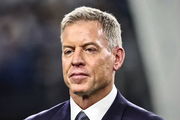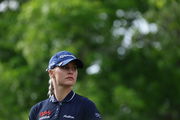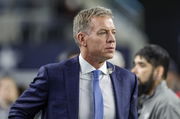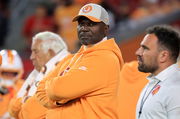
Imago
Credits : Imagn

Imago
Credits : Imagn
Decades of waiting, building brick by brick, fighting for respect, visibility, and then came that moment all waited for. Since Caitlin Clark’s arrival, the WNBA has witnessed record ratings, packed arenas, and buzz louder than ever before. For women’s basketball, this was supposed to be the moment. But behind the cheers and highlight reels, a darker reality lurked.
Watch What’s Trending Now!
The boom came at a cost. Racist slurs. Misogynistic rants. Homophobic insults and even threats.
A tidal wave of abuse so relentless that it began to overshadow the very game they were trying to grow. And the league knew this couldn’t be passed as just another aggression. Not when its stars were being targeted daily. Not when faceless accounts and hostile voices were chipping away at mental health. So, Commissioner Cathy Engelbert and team decided to draw a line.
ADVERTISEMENT
On May 15, the WNBA unveiled “No Space for Hate,” a league-wide initiative it described as “a multi-dimensional platform designed to combat hate and promote respect across all WNBA spaces.”
Cathy Engelbert: “As the WNBA continues to grow in popularity and influence, we’re proud to launch ‘No Space for Hate’ — a league-wide initiative to better protect players, preserve the spirit of the game, and affirm the values of our league. We believe that basketball can be a unifying force — a place where people from all walks of life come together not just to watch a game, but to connect.”
The concept is strong, but the real test lies in enforcement. How will the WNBA identify, track, and neutralize the hate across social media and digital platforms before it reaches its players?
ADVERTISEMENT
How the ‘No Space for Hate’ Initiative operates and its impact
To tackle the surge of online abuse, the WNBA rolled out its “No Space for Hate” initiative, featuring an AI-powered system to detect hate speech and harassment on social media. The technology allows the league to act swiftly, protecting players from targeted attacks while reinforcing a safer, more respectful environment. It’s a proactive move that the WNBA had to take to safeguard its athletes and ensure that the growth of the league doesn’t come at the cost of player safety.
ADVERTISEMENT
As part of the “No Space for Hate” campaign, the WNBA rolled out an AI-powered monitoring system aimed at detecting and addressing hate speech and harassment on social media. This cutting-edge technology was designed to help protect players and the broader WNBA community from online abuse.
Cathy Engelbert: “(It) will include, one, monitoring of social media and other digital platforms using an advanced technology solution to detect and monitor comments and threats. Two, strengthening our conduct standards across all WNBA platforms, including in the arena.”
ADVERTISEMENT

On paper, the initiative seemed like a game-changer, an effort players could lean on, confident that the league was prioritizing their safety and well-being. But intentions and execution don’t always align. Just a day after the announcement, the WNBA season tipped off, and the reality of the challenges quickly became apparent.
ADVERTISEMENT
After the opener, reports suggested Angel Reese had been targeted with racial abuse. The league confirmed they investigated but ultimately found no violations. Yet the online harassment didn’t stop—Reese faced a relentless wave of abuse, amplified by critiques of her early-season performance and the infamous “mebounds” chatter. The situation raised a question: Is the platform truly fulfilling the protective role it was designed to serve?
Top Stories
Forced to Leave FOX, Cowboys Legend Troy Aikman Says ESPN Is Like ‘U.S. Government’ & Clearly Distinguishes the Two Networks

Who Is Paige Shiver? All About Michigan Football Staffer & Daughter of Veteran Bears Scout Jeff Shiver

Charley Hull Opens Up on Traumatic Divorce from Ex-Husband for the First Time Ever

Cowboys Legend Troy Aikman Teases NFL Comeback After Airing FOX’s Dirty Laundry

Todd Bowles Points Fingers at Baker Mayfield & Co. in a Strong Statement That Could Get Him Punished After Bucs Loss

LIV Golf to Cut Ties With Veteran Pro After His PGA Tour Return Intentions Became Public

EssentiallySports’ Observation:
The jury is still out. All credit to the WNBA and Commissioner Cathy Engelbert for taking a bold step with this initiative; however, with limited to no public data, the impact remains uncertain. Social media harassment persists, and players continue to face trolling and hate. That said, a fair counterpoint is that fans absolutely have the right to criticize the players as long as they don’t cross the line.
ADVERTISEMENT
Perhaps that’s precisely the line the WNBA seems to be drawing: Not stopping fans from voicing opinions, but protecting players from racial abuse and threatening messages.
The initiative is crucial, but it’s key to understand what made Cathy Engelbert act—why the threats and harassment reached a point that demanded immediate league intervention.
ADVERTISEMENT
A breakdown of what led to the No Space for Hate initiative
For as long as it has existed, the WNBA hasn’t needed permission to lead. While critics still dismiss it as a “developing league,” its players have shown that they were already out in front—championing LGBTQ+ rights, demanding maternity protections, normalizing conversations about mental health, and advocating for breast cancer awareness —long before other American sports caught on.
Some, of course, point it to education—most players complete four years of college before turning pro—as the reason behind that leadership, but we at EssentiallySports felt the truth goes deeper—less to do with classroom knowledge but more to do with lived experience and a shared conscience.
Before the Paris Olympics, the UNESCO Sport and Gender Equality Game Plan highlighted an (1 of many) urgent challenge girls and women in sport are facing: gender-based violence in sport
ADVERTISEMENT
By now, it is established that WNBA players have long been ahead of the curve in confronting racism. Years before Black Lives Matter took hold nationally in 2020, they were already protesting police violence after the killings of Philando Castile and Alton Sterling. While much of the sports world stayed quiet, WNBA athletes put their voices, platforms, and even careers on the line. The league back then fined them for protesting (debatable).
The then Phoenix Mercury forward Mistie Bass tweeted, “Don’t say we have a voice and then fine us because we use it. #notpuppets #cutthestrings.”
In December 2024, a 40-year-old man pleaded guilty to stalking Dallas superstar Paige Bueckers, bombarding her with obsessive posts, a fake wedding invitation, and even photos of himself wearing what looked like an engagement ring. He went so far as to email UConn’s communications department about his intent to marry her. The ordeal left Bueckers “concerned” and “worried,” not just for herself but for her family and teammates. And hers was not the only case. The victim we are to talk about next? Caitlin Clark.

Imago
Aug 31, 2025; San Francisco, California, USA; Indiana Fever guard Caitlin Clark (center) gestures after an offensive foul by Golden State Valkyries guard Veronica Burton (foreground right) during the third quarter at Chase Center. Mandatory Credit: Darren Yamashita-Imagn Images
Earlier this year, the dangers of targeted harassment in women’s basketball became frighteningly real. In Indianapolis, 55-year-old Michael Lewis of Texas was arrested after unleashing a campaign of terror against Fever rookie Caitlin Clark. Prosecutors revealed he sent more than 800 threatening and sexually explicit messages over just one month, leaving Clark “very fearful” for her safety. But the digital abuse wasn’t the end of it.
Lewis escalated into physical stalking, driving from Texas to Indiana, circling Gainbridge Fieldhouse multiple times, and even purchasing tickets to a Butler women’s game specifically because he knew Clark would attend. The case ended with a conviction:
Lewis pleaded guilty to one felony count of stalking and one misdemeanor count of harassment, drawing a 30-month jail sentence.
A few players had to make drastic moves like deactivating some of their social media accounts or heavily limiting their engagement, despite the clear and often critical income potential that came from marketing directly to fans.
| Brittney Griner revealed that fans directed racist taunts at her and others while she was playing for the Phoenix Mercury. |
| Angel Reese reported that AI-generated n— images of her had circulated online. |
| DiJonai Carrington shared on Instagram a graphic email she had received containing threats of violence and a racist slur, following an incident during the first game of the 2024 playoffs in which Carrington inadvertently poked one of Clark’s eyes. |
| NaLyssa Smith, who played with Caitlin Clark during the 2024 season, wrote on X that DiJonai Carrington had even been followed. |
| Alyssa Thomas said that she and her former Sun teammates had faced the most intense racist bullying she had encountered in her 11 WNBA seasons, particularly during their playoff games against the Fever that ended Caitlin Clark’s rookie season. |
| Breanna Stewart’s wife, Marta Xargay Casademont, received homophobic and threatening emails following Game 1 of the WNBA Finals. |
When there’s a large influx of sudden interest, even a handful of problematic minds can become a significant number. The WNBA’s a victim of that, where a group or individual, masked as fans, treats the league as a culture-war battleground rather than a basketball stage. The toxicity has been relentless. Isabelle Harrison of the Liberty put it plainly:
“I appreciate the new eyes,… but if this comes with hate and bigotry and racism and even people who look like me bashing me, keep it offline because it’s so hurtful, and you don’t know how that affects people.”
When we at EssentiallySports piece it all together—the relentless hate speech, the alarming escalation into stalking, and the chilling cases targeting stars like Paige Bueckers and Caitlin Clark—it becomes painfully clear why the WNBA could no longer treat player safety as optional. The league’s meteoric rise brought unprecedented visibility, but also a dangerous undercurrent of harassment that threatened both mental and physical well-being. Protecting players is non-negotiable—a vital step to preserve the league’s integrity and the humans behind its success—and let the AI monitoring system be just the beginning, not the endpoint, in the ongoing battle against this evolving threat.
ADVERTISEMENT
ADVERTISEMENT
ADVERTISEMENT

